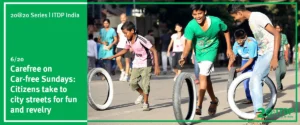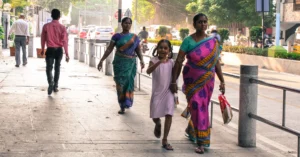A travel-demand management measure, congestion pricing aims to tackle the issue of road congestion, growing private vehicle use, and environmental pollution. Simply put, the approach will look to levy a charge on private vehicles for accessing a high-demand stretch or zone. These charges are aimed at discouraging usage of private vehicles, while improving and promoting public transport ridership.
A move long overdue
Mumbai has been renowned for its strong network of public transport systems such as the omnipresent BEST buses and the reliable ‘local trains’. But as middle-class ambitions grew, so did the car-craze. In the recent decade, private automobiles found safe sanctuaries in the homes and streets of Mumbai. Meanwhile, the BEST bus services continue to suffer due to declining fleet sizes and ridership; while the local trains, the city’s backbone, are bursting at the seams with unimaginable passenger load.
Greater Mumbai’s extravagant private vehicle growth and expenditure on related infrastructure cannot justify the paltry commute figures. Private vehicle numbers skyrocketed from 7.9 lakh in 2001 to 32 lakh in 2017! Even though they make up for only 12% of all trips, private vehicles occupy over three-fourth of road space, leaving the rest to the fringes. What happens when the 12% increases to 20% or even more? Constructing more roads or flyovers is not the answer – these are short sighted solutions that are expensive and unsustainable.
Decongest and get a move on
As per Uber Movement estimates, the average Mumbaikar spends 135% per cent more time on the road than their Asian counterparts. Thus, the move to congestion pricing is not about punishing the driver; it is more about ensuring people get to their destination faster and more affordably—with less environmental impact and less stress.
According to the MMRDA, congestion pricing will encourage a modal shift to public transport modes which is a healthy alternative for people and the environment. It is also understood that an effective congestion pricing strategy will increase average speed and reduce travel times by all modes, especially buses.
However, congestion pricing is a mere part of the bigger puzzle that looks to resolve traffic congestion in cities like Mumbai. “Mumbai should first try more simple traffic reduction measures like charging on-street parking and eliminating on-street parking from mobility corridors. That is slowing down buses. The buses run only about 160 km/day today, against 200 km just a few years ago. Buses have to run 200 km/day to be viable” says Harshad Abhyankar, Mobility Planning Specialist at the ITDP India Programme.
Presently, BEST buses share the carriageway with other vehicles and hence, their operating speed is adversely affected by traffic congestion. Haphazard parking increases friction on the street edge which further slows them down. Lower bus speeds generally result in fewer buses scheduled on routes, which only entices commuters to opt for the more ‘convenient’ option – their car or the two-wheeler. And this vicious cycle continues.
The move towards congestion pricing will allow Mumbai to explore the possibility of firstly, charging on-street parking to discourage the use of private vehicles, secondly, prioritising and strengthening the lifeline of the city – its BEST buses, and thirdly, investing in high-quality people-friendly infrastructure such as footpaths, cycle tracks, and dedicated bus lanes. For all of this to be successful, “a legislation that gives charge of all traffic reduction measures and related responsibilities to a single entity is desirable”, emphasised a participant at the focus group discussion.
No one enjoys being stuck in traffic. People stuck in traffic jams lose time, money, and their peace of mind. Congestion pricing is a measure to reduce traffic congestion – that is charging private vehicles for accessing a high-demand stretch or zone. The revenue generated can be levied to improve city bus services, and walking and cycling infrastructure – the more sustainable way of moving around. However, its application is an uphill task. The ITDP India Programme is excited to be working with MMRDA to learn from this initial meeting, further its understanding from international case studies, and explore possibilities of congestion pricing in Mumbai.
Move over traffic, Mumbaikars coming through (about time)!




